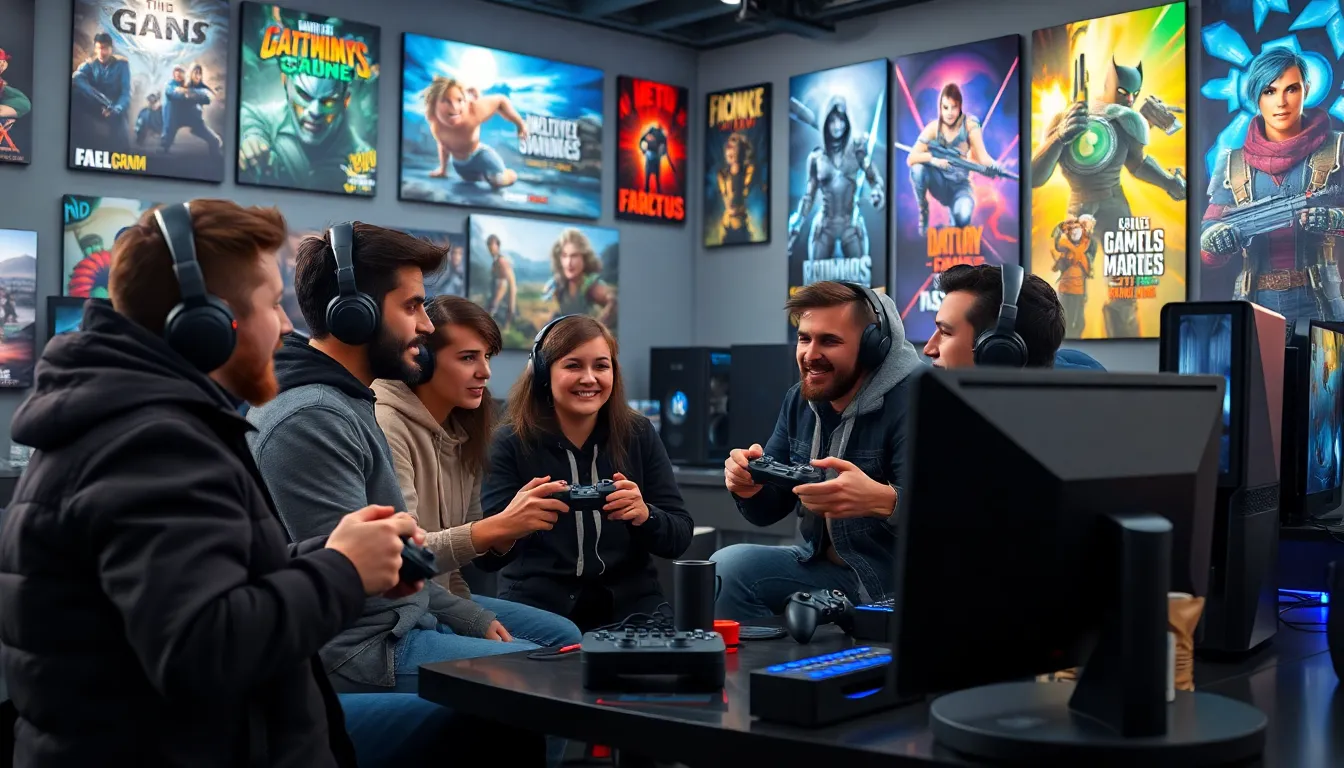Table of Contents
ToggleIn the ever-evolving world of gaming, opinion pieces serve as a vital platform for players and critics alike. They spark discussions, challenge norms, and provide fresh perspectives on everything from game mechanics to storytelling. As gamers dive deeper into their favorite titles, these articles become essential for understanding the industry’s pulse.
Whether it’s a passionate critique of a blockbuster release or a heartfelt tribute to an indie gem, game opinion pieces reflect the diverse voices within the gaming community. They not only influence public perception but also shape the future of game development. Engaging with these insights can enhance a player’s experience and foster a richer understanding of the art form.
Overview of Game Opinion Pieces
Game opinion pieces serve as critical commentary within the gaming industry, offering insights that resonate with both gamers and developers. They provide a platform for discussions surrounding game design, culture, and the broader industry landscape.
Definition and Purpose
Game opinion pieces are articles that express individual or collective viewpoints on various gaming topics. Their purpose lies in engaging the community by analyzing game mechanics, narratives, and player experiences. Such pieces aim to provoke thought, encourage dialogue, and reflect on the evolving nature of gaming as an artistic medium.
Types of Game Opinion Pieces
- Review Articles
Review articles evaluate specific games, focusing on gameplay, graphics, and storytelling. They guide potential players through an analysis of both strengths and weaknesses.
- Editorials
Editorials discuss broader industry trends or significant issues, such as diversity, representation, and ethical practices in game development. They offer perspectives that can shape public discourse.
- Retrospectives
Retrospectives look back at classic games or franchises, analyzing their impact on the industry. They celebrate legacy while considering how these titles influence modern game design.
- Critique Pieces
Critique pieces provide in-depth analysis of specific elements, such as mechanics or genre trends. They offer constructive feedback, highlighting areas for improvement in future titles.
- Personal Stories
Personal stories recount individual experiences with gaming, exploring emotional responses and community interactions. They connect readers to the human side of gaming culture.
Impact on the Gaming Community

Game opinion pieces significantly influence the gaming community by shaping perceptions and guiding conversations. They not only express diverse viewpoints but also impact the decisions of both players and developers.
Influence on Players
Influence on players manifests through an increased awareness of gameplay mechanics, narratives, and cultural implications. Readers often engage more thoughtfully with games, leading to discussions on forums and social media. These pieces provide insights that enhance player experiences, cultivating a more informed gaming community.
Moreover, critical analyses prompt players to reflect on their preferences and challenge established norms. Game opinion pieces encourage individuals to perceive gaming as an art form with depth and complexity, rather than mere entertainment. Popular opinion pieces can even drive trends, influencing what games become widely discussed or celebrated.
Effects on Game Developers
Effects on game developers include heightened engagement with community feedback and trends. Developers frequently monitor these opinion pieces to gauge audience reactions and refine their products. Critical insights can inspire improvements in game design, narrative structure, and user experience.
Additionally, developers often utilize opinions in strategizing marketing efforts and determining future projects. Recognizing trends articulated in opinion pieces helps in aligning development priorities with community interests. Thus, informed commentary aids in fostering better relationships between developers and players, creating a more cohesive gaming ecosystem.
Notable Game Opinion Pieces
Game opinion pieces have shaped discussions within the gaming community. They provide critical insights and diverse viewpoints, influencing both gamers and developers alike. Below are notable examples and key takeaways from these impactful pieces.
Famous Examples
- “How Video Games Can Help Us Understand Empathy” by Jim Sterling
- Explores how narrative-driven games, like The Last of Us and Life is Strange, foster emotional connections and empathy among players.
- “The Death of Single-Player Games” by Jason Schreier
- Analyzes the industry’s shift towards multiplayer experiences, examining the implications for narrative and gameplay in standalone titles.
- “The Problem with Loot Boxes” by Anita Sarkeesian
- Critiques the ethics surrounding loot boxes, addressing concerns about gambling mechanics and their impact on younger gamers.
- “Why Games are Art” by Roger Ebert
- Argues for the recognition of video games as a legitimate form of artistic expression, discussing key titles that demonstrate creativity and emotional depth.
- “Gaming’s Diversity Problem” by Brianna Wu
- Highlights the lack of representation in gaming, focusing on the need for diverse characters and stories to mirror the broad spectrum of the gaming community.
Key Takeaways
- Influence on Design: Opinion pieces highlight critical insights that inform game design and development priorities, emphasizing player experiences.
- Community Engagement: These articles foster community discussion, encouraging players to voice their thoughts and challenge industry norms.
- Cultural Reflection: Game opinion pieces serve as a mirror to societal changes, showcasing how games reflect cultural and social issues.
- Diversity Matters: Increasing awareness around representation drives developers to consider inclusivity in their games, impacting audience reception and market success.
- Future Trends: They predict and influence future trends in gaming, affecting everything from gameplay mechanics to narrative structures.
Writing and Structure
Creating engaging game opinion pieces requires a clear structure and purposeful writing. These elements capture the audience’s attention, encourage discussion, and provide valuable insights into gaming.
Crafting an Engaging Opinion Piece
- Identify a Focused Topic: Choose a specific aspect of gaming to explore, such as mechanics, storytelling, or industry trends.
- Establish a Strong Argument: Present a clear thesis statement that outlines the main point of the piece.
- Use Evidence: Incorporate statistics, quotes, and examples from games to support claims and enhance credibility.
- Engage the Audience: Write in an inclusive tone and pose questions to provoke reader thoughts and encourage interaction.
- Structure Logically: Organize the piece into sections with headings, making it easier for readers to navigate and digest key points.
- Include a Personal Reflection: Share personal insights or experiences related to the topic to create a relatable connection with readers.
- End with a Thought-Provoking Conclusion: Summarize the main argument and encourage further dialogue on the topic.
Common Pitfalls to Avoid
- Vagueness of Ideas: Avoid broad statements that do not provide concrete examples or insights.
- Lack of Research: Ensure all claims are backed by credible sources to prevent misinformation and maintain authority.
- Ignoring the Audience: Failing to consider the interests or preferences of the readership can lead to disengagement.
- Overly Complex Language: Use clear and accessible language to communicate ideas effectively.
- Neglecting Structure: Disorganized content can confuse readers; utilize headings and paragraphs for clarity.
- Failure to Edit: Skipping the editing process can result in grammatical errors and hinder the professionalism of the piece.
Game opinion pieces are essential in fostering a vibrant dialogue within the gaming community. They not only provide critical insights but also encourage players and developers to engage with gaming on a deeper level. By reflecting diverse perspectives and sparking meaningful discussions, these pieces contribute to the evolution of gaming as an art form.
As the industry continues to grow and change, the importance of informed commentary will only increase. Players will benefit from a richer understanding of games while developers can leverage community feedback to create more engaging experiences. Embracing the insights offered by opinion pieces ultimately strengthens the bond between gamers and creators, paving the way for a more dynamic and inclusive gaming landscape.




